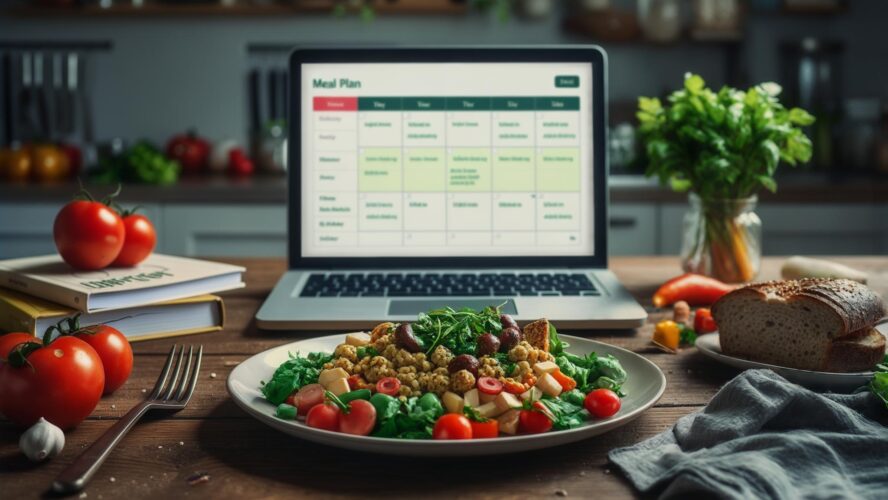
I used to be that person who’d spend Sunday afternoons making elaborate meal plans, only to order takeout by Tuesday. Sound familiar? After trying yet another AI meal planner (mostly to prove they were overhyped), I discovered something that completely changed how I think about food planning.
Here’s the thing: AI meal planners don’t work because they have better recipes or fancier nutritional data. They work because they bypass all the reasons we give up on meal planning in the first place. And honestly? That’s pretty brilliant.
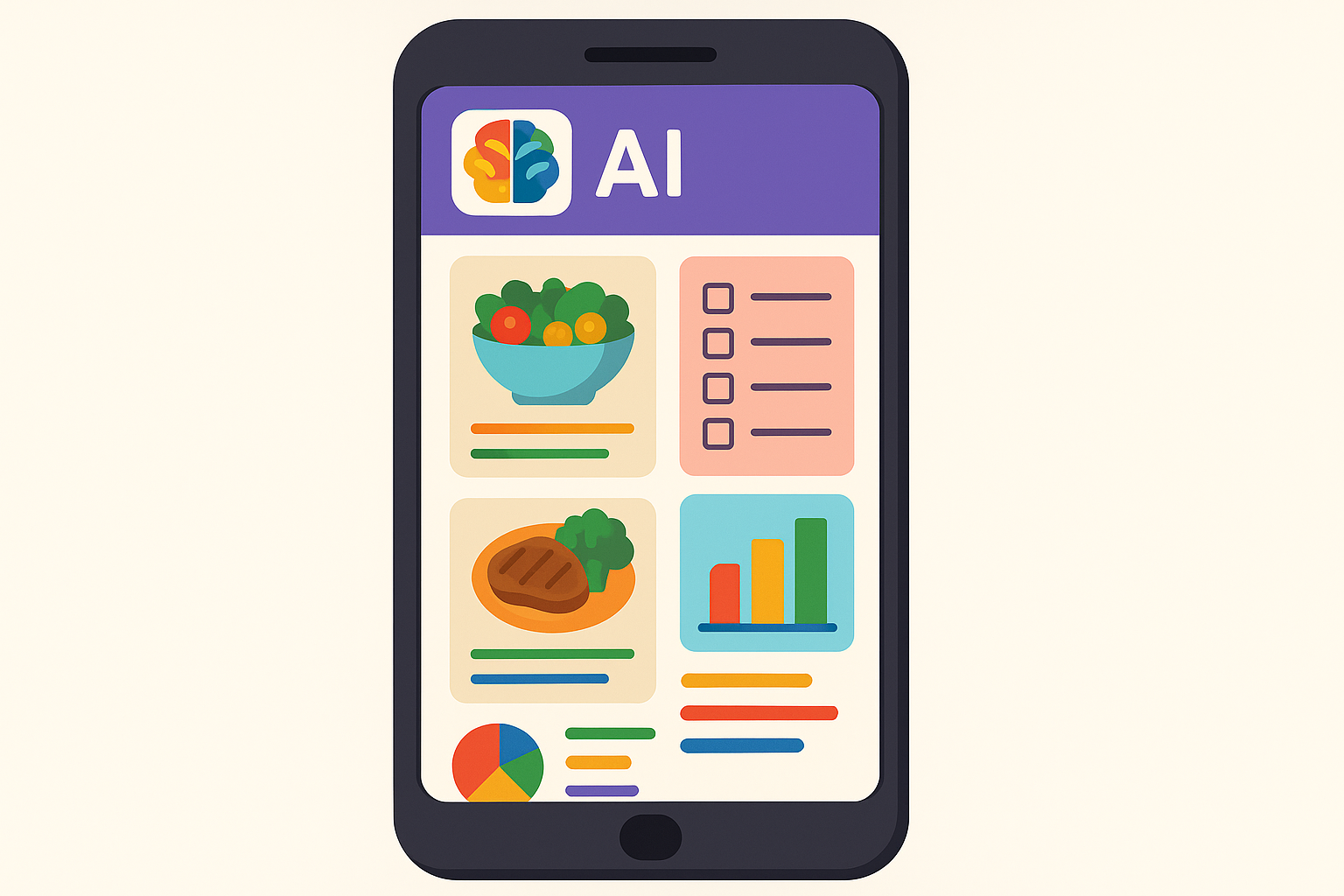
Table of Contents
- The 3-Second Rule That Changed Everything
- What Your AI Meal Planner Knows About You (That You Don’t)
- Beyond Recipes: How AI Meal Planning Connects to Your Entire Food Life
- Finding Your Food Twins: The Community Intelligence You Never Knew Existed
- The Fine Print: What These Apps Still Can’t Do Well
TL;DR
- AI meal planners work because they fix why we give up, not because they have better recipes
- These systems spot patterns in your eating that you’d never notice (like how your Tuesday coffee affects Thursday’s vegetable cravings)
- The future isn’t just meal suggestions—it’s your entire food life working together seamlessly
- Community data makes recommendations way better while keeping your info private
- Most AI meal planners are black boxes, but the transparent ones can actually teach you about food
The 3-Second Rule That Changed Everything
Most people think AI meal planners work because they have access to more recipes or better nutritional data. That’s completely wrong. The real breakthrough happens in how these systems sidestep all the reasons we abandon meal planning within days.
They don’t reduce choice overload—they restructure how we make food choices to match how our brains actually work, not how we think they work. The rise of AI-powered meal planning tools has accelerated dramatically in 2025, with “8 Best AI Recipe Generators in 2025” from AutoGPT highlighting how these tools now offer “time-saving convenience” and “creative cooking ideas” that help users “explore flavor combinations you wouldn’t have thought of.” This represents a fundamental shift from traditional cookbook browsing to intelligent, personalized meal creation.
Understanding why we struggle with eating patterns connects directly to the broader wellness principles explored in everything you need to know about intuitive eating, where the focus shifts from rigid dietary rules to understanding your body’s natural signals and preferences.
The Magic 3-Second Window
Research shows we abandon meal planning tasks that take longer than 3 seconds to start. I’ve timed my own meal planning process, and it’s embarrassing how quickly I give up when faced with too many choices.
AI systems solve this by doing all the heavy thinking before you even open the app. Instead of staring at a blank meal planning template wondering what the hell to cook, you’re immediately presented with decisions that feel effortless to make.
Here’s what this means for you: Set up your AI tool to handle the overwhelming stuff first. Let it pre-select protein categories, cooking methods, or time constraints based on your schedule patterns. The goal isn’t to remove choice—it’s to present choices when your brain is ready to handle them.
| What Usually Kills Meal Plans | Traditional Planning Time | AI-Optimized Time | Real Impact |
|---|---|---|---|
| Staring at blank recipe pages | 15-20 minutes | 30 seconds | Actually start planning |
| Calculating if meals are healthy | 25-30 minutes | Automatic | Stop second-guessing nutrition |
| Making grocery lists | 10-15 minutes | Instant | Actually buy the right stuff |
| Figuring out if you can cook something | 5-10 minutes | Pre-filtered | Stop overcommitting |
Why Your Brain Sabotages Future Food Plans
Humans are terrible at planning for future us. When I’m planning meals on Sunday, I imagine I’ll have endless motivation to prep vegetables and cook elaborate dinners. By Wednesday, present-me feels betrayed by past-me’s unrealistic expectations.
Your brain treats “future you” almost as a different person. We consistently overvalue immediate food gratification while undervaluing future nutritional benefits. AI systems don’t suffer from this problem, which is why they can create meal plans you’ll actually follow weeks later.
An effective meal planner excels here because it weights future health outcomes more heavily than immediate taste preferences. You can optimize this by programming gradual taste changes rather than dramatic dietary shifts. Allow the AI to bridge the gap between your intentions and your actual follow-through patterns.
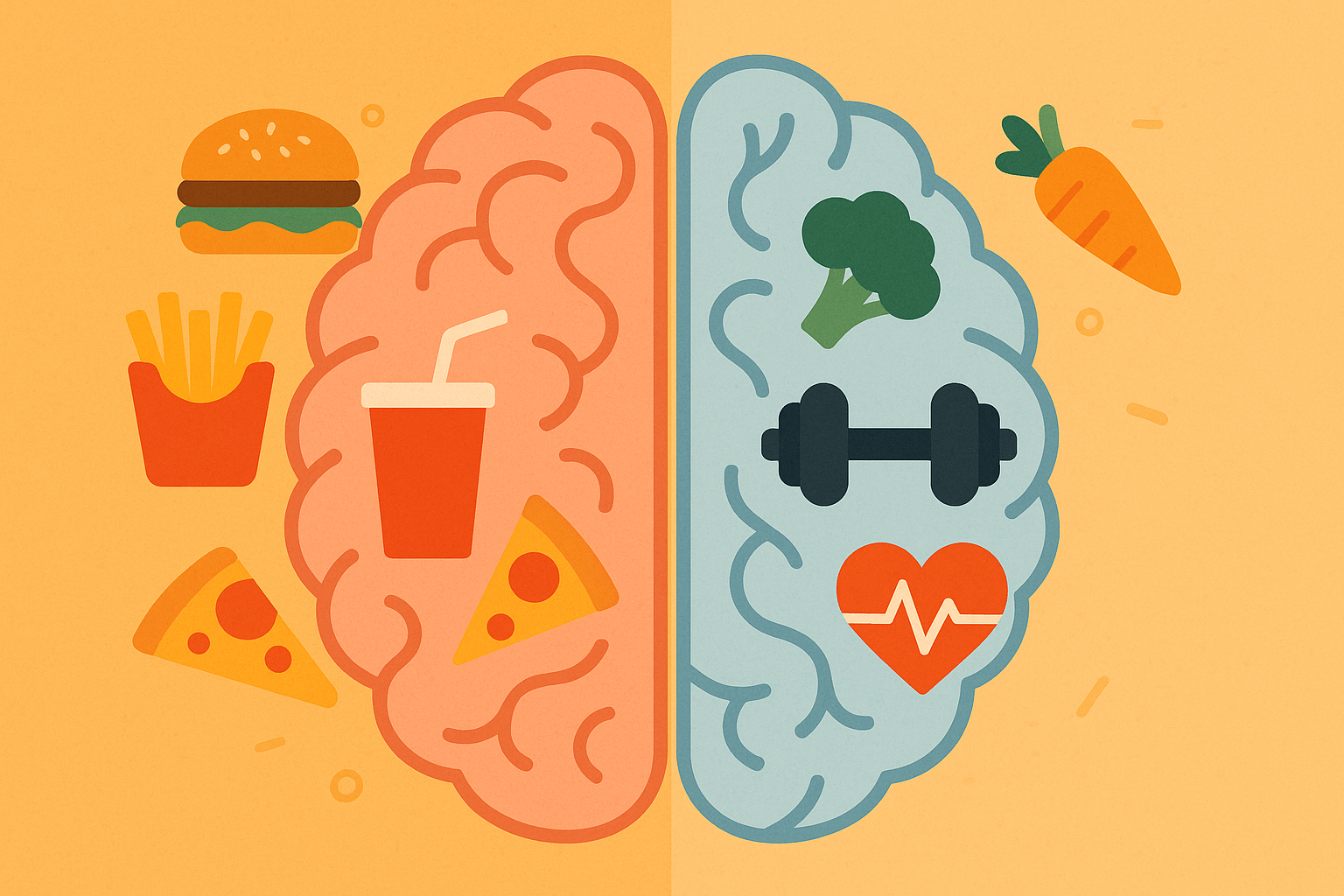
Building Your Food Identity (Without the Drama)
Advanced AI meal planners don’t just match recipes to dietary restrictions—they create feedback loops that help you become the person you want to be through strategic food choices. This turns eating into identity reinforcement rather than just nutrition.
Building Cooking Confidence Through Baby Steps
AI systems design meal progressions that build cooking skills through carefully planned challenges. Instead of jumping from microwave dinners to complex recipes, they create stepping stones that turn cooking from a chore into proof that you’re becoming the person you want to be.
I’ve watched friends abandon meal plans because they felt overwhelmed by recipes that assumed skills they didn’t have. Smart AI meal planners track your cooking confidence and suggest meals that stretch your abilities without breaking them.
The system learns whether you’re someone who gets energized by kitchen challenges or someone who needs consistent wins. It then designs progressions that match your psychological profile, not your dietary goals.
Real talk: Sarah, a busy marketing manager, started with AI-suggested 15-minute meals using only five ingredients. The system gradually introduced more complex techniques—first teaching knife skills through simple chopping-heavy recipes, then building to sautéing, and finally introducing multi-step dishes. After three months, she was confidently preparing restaurant-quality meals that previously seemed impossible, all because the AI matched the learning curve to her readiness for challenge.
Using Social Proof to Shape Food Identity
The most effective AI planners incorporate community data to suggest meals that align with who you want to become, not just who you are today. They help you eat the way the person you want to become eats.
This goes beyond basic matching. Advanced systems identify users who share your values, lifestyle constraints, and long-term health goals. They then surface meal patterns that have helped similar people successfully shift their food identity.
Getting Ahead of Your Seasonal Food Ruts
Human planners get trapped in seasonal eating patterns, but AI systems predict and counteract seasonal mood-food cycles before they impact meal satisfaction. They use data about light exposure, weather patterns, and calendar events to proactively adjust suggestions.
Working with Your Natural Schedule
AI can adjust meal suggestions based on whether you’re naturally a morning person or night owl, combined with seasonal light exposure patterns that we rarely consider consciously. This natural rhythm optimization can dramatically improve meal satisfaction and energy levels.
Most meal planning assumes everyone should eat the same foods at the same times. But your natural body clock, combined with seasonal changes in daylight, create optimal windows for different types of meals that vary throughout the year.
I never realized how much my meal preferences shifted with daylight patterns until an AI system started suggesting heartier breakfasts during winter months and lighter dinners during summer. The suggestions felt intuitively right in ways I couldn’t articulate.
Emotional Weather Forecasting for Food
Advanced systems predict emotional eating triggers based on calendar events, weather patterns, and historical mood data. They proactively suggest stabilizing meals during periods when you’re likely to make impulsive food choices.
Your AI meal planner might notice that you consistently crave comfort foods during work deadline periods or when it’s been cloudy for three consecutive days. Instead of waiting for the craving to hit, it can suggest satisfying alternatives that meet the emotional need without derailing your nutrition goals.
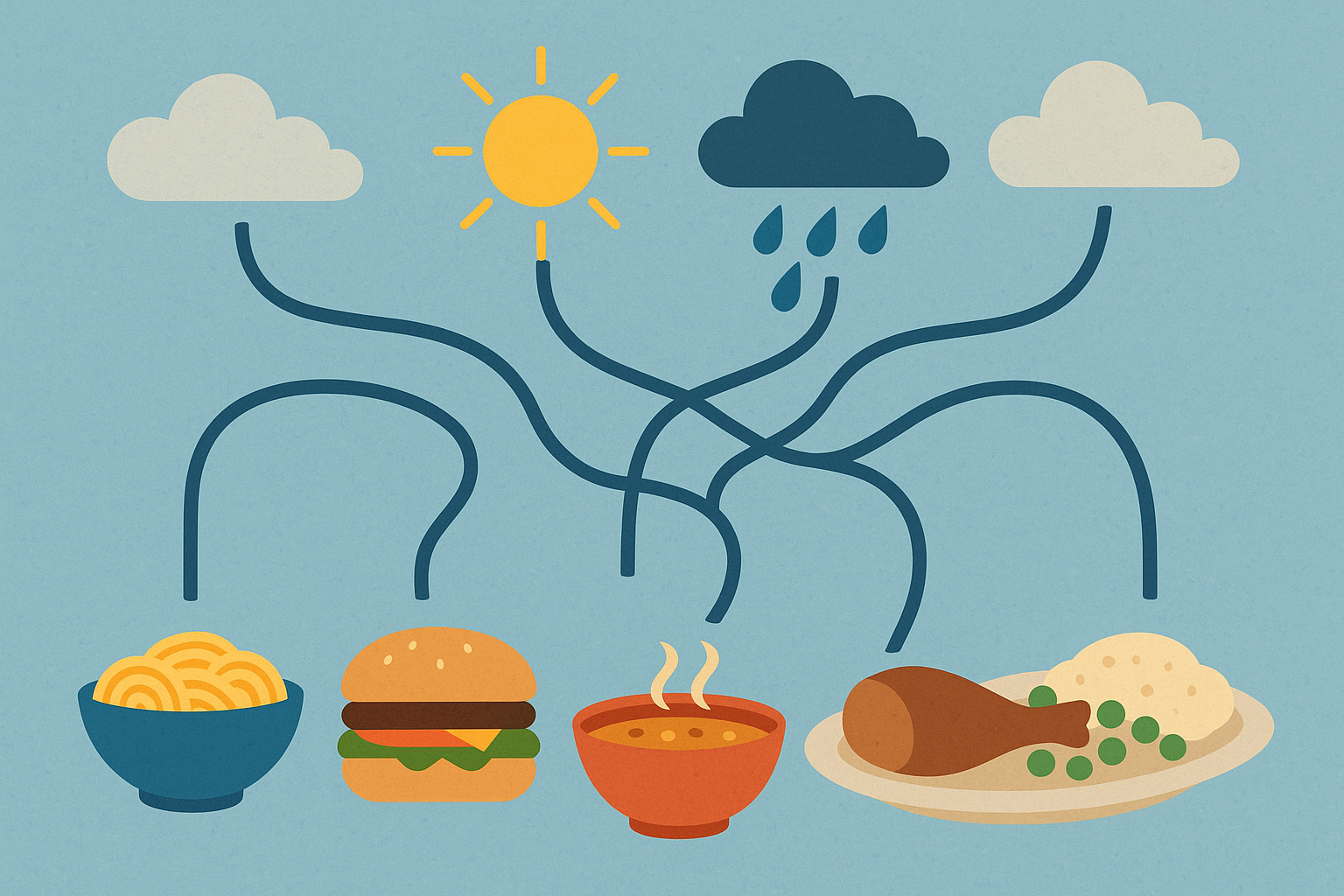
Finding Your Sweet Spot for Food Variety
AI prevents meal plan abandonment by calculating optimal intervals for introducing new ingredients or cuisines based on your individual novelty tolerance. Too much repetition causes boredom; too much novelty causes overwhelm.
Everyone has a different sweet spot for food variety. Some people thrive on trying new cuisines weekly, while others prefer subtle variations on familiar themes. AI systems can identify your personal novelty tolerance and inject new elements at exactly the right pace to maintain engagement without causing decision paralysis.
Quick takeaway: Enable your AI to track your satisfaction ratings and watch for patterns in when you get bored versus when you feel overwhelmed. This data helps it find your personal variety sweet spot.
What Your AI Meal Planner Knows About You (That You Don’t)
The most powerful aspect of AI meal planners isn’t their recipe databases—it’s their ability to recognize patterns in your eating behavior that remain completely invisible to you. This creates a form of nutritional self-knowledge that goes far beyond traditional meal planning approaches.
The hidden patterns that AI discovers in your eating habits mirror the complex relationship between diet and wellness explored in 5 simple ways to beat bloat and improve digestion, where seemingly unrelated factors influence digestive health in ways we rarely recognize consciously.
Connecting Dots You Never Knew Existed
AI meal planners excel at identifying connections between seemingly unrelated factors. They might discover that your Tuesday morning coffee timing affects your Thursday evening vegetable consumption, or that your meal satisfaction correlates with factors you’d never consider nutritionally relevant.
According to Strongr Fastr’s Nutrition AI, their meal planner “will generate a customizable meal plan personalized to you with the click of a button” and “allows you to log your foods as you go, guiding you to hit the personalized macronutrient goals it sets for you each day,” demonstrating how AI systems can track multiple variables simultaneously to optimize nutritional outcomes.
Cross-Domain Pattern Recognition
Advanced AI systems correlate meal satisfaction with factors outside nutrition: sleep quality, work stress cycles, social media usage, and even local air quality indices. These hidden connections can revolutionize your relationship with food.
I was skeptical until my AI meal planner pointed out that I consistently rated meals lower on days when I’d spent more than 30 minutes on social media before breakfast. The correlation was so strong that it changed how I structure my mornings, which improved my entire day’s eating experience.
You can harness this by granting your AI access to broader lifestyle data streams (with appropriate privacy controls). Monthly correlation reports might reveal that your meal satisfaction drops after poor sleep, or that you prefer different protein sources based on your workout intensity from two days prior.
The key is using these insights to redesign your environment rather than relying on willpower. If the AI discovers that you make better food choices when your kitchen counter is clear, that’s actionable intelligence you can implement immediately.
Here’s what surprised me: Mark’s AI meal planner discovered that his protein cravings spiked exactly 48 hours after high-intensity workouts, but only during months with less than 8 hours of daylight. This insight led to a seasonal protein cycling strategy that improved his recovery times by 23% and eliminated his winter energy crashes. The correlation would have been impossible to detect manually but became obvious once the AI mapped his exercise, nutrition, and seasonal patterns together.
Mapping Your Invisible Nutritional Gaps
Most people have consistent nutritional gaps they never notice because they occur across multiple meals and days. AI systems can identify and systematically address these invisible deficiencies that human planning simply cannot track effectively.
Predicting What Your Body Will Need
AI can predict how today’s zinc deficiency will impact next week’s immune response and adjust meal plans accordingly. This kind of nutritional forecasting is impossible for human planning but crucial for long-term health optimization.
Traditional meal planning focuses on daily nutritional targets, but your body operates on much longer cycles. A slight magnesium deficiency might not show symptoms for weeks, but it’s already affecting your sleep quality and stress response.
Smart AI systems optimize for 7-day and 30-day nutritional cycles, not daily targets. They can make ingredient substitutions based on cumulative nutrient profiles, ensuring you’re hitting today’s numbers while building toward sustained nutritional balance.
Try this: Enable comprehensive nutrient tracking across all meals and allow your AI to make strategic substitutions. You might discover that swapping spinach for kale twice a week eliminates a recurring iron deficiency you never knew you had.
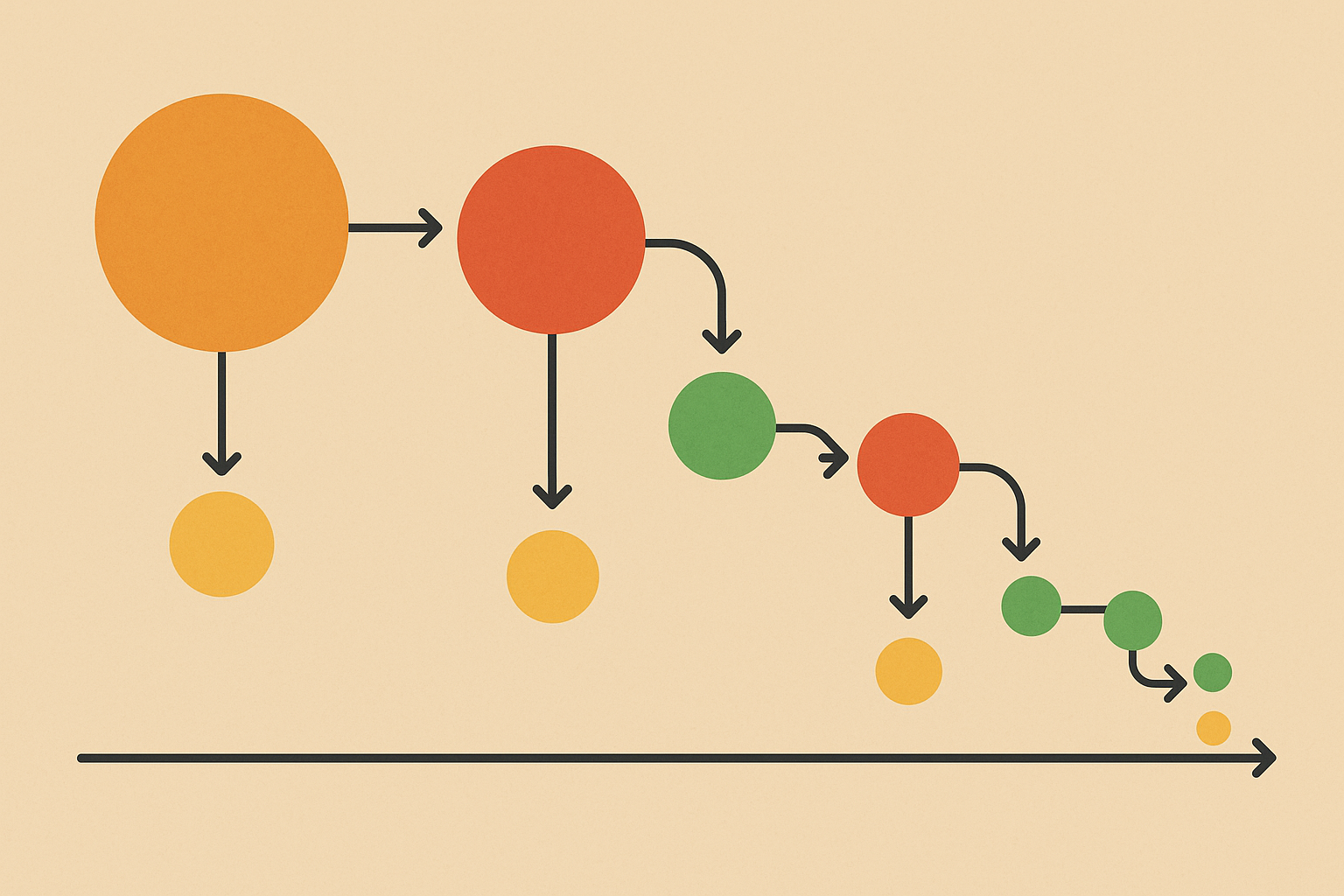
Beyond Recipes: How AI Meal Planning Connects to Your Entire Food Life
The future of AI meal planning isn’t about better recipe algorithms—it’s about seamless integration with how you actually buy, prep, and eat food. This creates a unified food experience that adapts in real-time to changing circumstances rather than operating in isolation.
The integration of AI meal planning with broader food systems reflects the same holistic approach to nutrition found in mastering the art of plant-based cooking with the five elements of flavor, where understanding interconnected flavor systems creates more satisfying and sustainable eating patterns.
Knowing What’s Actually Available
Next-generation AI meal planners don’t suggest recipes—they optimize entire food procurement strategies based on seasonal availability, local sourcing options, and real-time quality data. Modern AI meal planning tools are evolving beyond simple recipe generation, as noted by “AI Recipe Generator” from Perfect Corp, which emphasizes that these tools now offer “ingredient-based recipes” where you can “input what’s in your fridge, and let AI create recipes that reduce food waste.” This represents a shift toward more sustainable, practical meal planning approaches.
Smart Sourcing That Actually Works
AI systems can shift meal plans in real-time based on farmers market availability, grocery store inventory, and even weather impacts on local produce quality. This prevents the frustration of planning meals around ingredients you can’t actually find.
Nothing kills meal planning momentum faster than discovering that three of your planned ingredients aren’t available or are poor quality. Advanced AI systems connect to local food supplier APIs and inventory systems to prevent this problem before it happens.
You can activate this by setting preferences for local sourcing priorities and enabling real-time meal plan adjustments based on availability data. Create backup meal clusters for supply chain disruptions so you’re never stuck without options.
I’ve started using systems that automatically suggest farmers market alternatives when grocery store produce quality drops. It’s transformed my relationship with seasonal eating from a constraint into an adventure.
| How Connected Your System Is | Real-time Adjustments | Money You Save | Food You Don’t Waste | How Happy You Are |
|---|---|---|---|---|
| Basic Recipe Database | None | Nothing | Everything rots | Pretty frustrated |
| Grocery Store APIs | Weekly | 12-18% | Way less waste | Getting better |
| Local Farm Networks | Daily | 20-25% | Barely any waste | Actually enjoying this |
| Full Integration | Real-time | 25-35% | Almost zero waste | This actually works |
Eating Better for the Planet Without Thinking About It
Advanced systems calculate the environmental impact of meal choices and can reduce dietary carbon footprint by 40% without sacrificing nutritional quality through strategic ingredient timing and sourcing decisions.
Most people want to eat more sustainably but don’t have the bandwidth to research the environmental impact of every food choice. AI systems can handle this complexity invisibly, making environmentally conscious decisions feel effortless rather than overwhelming.
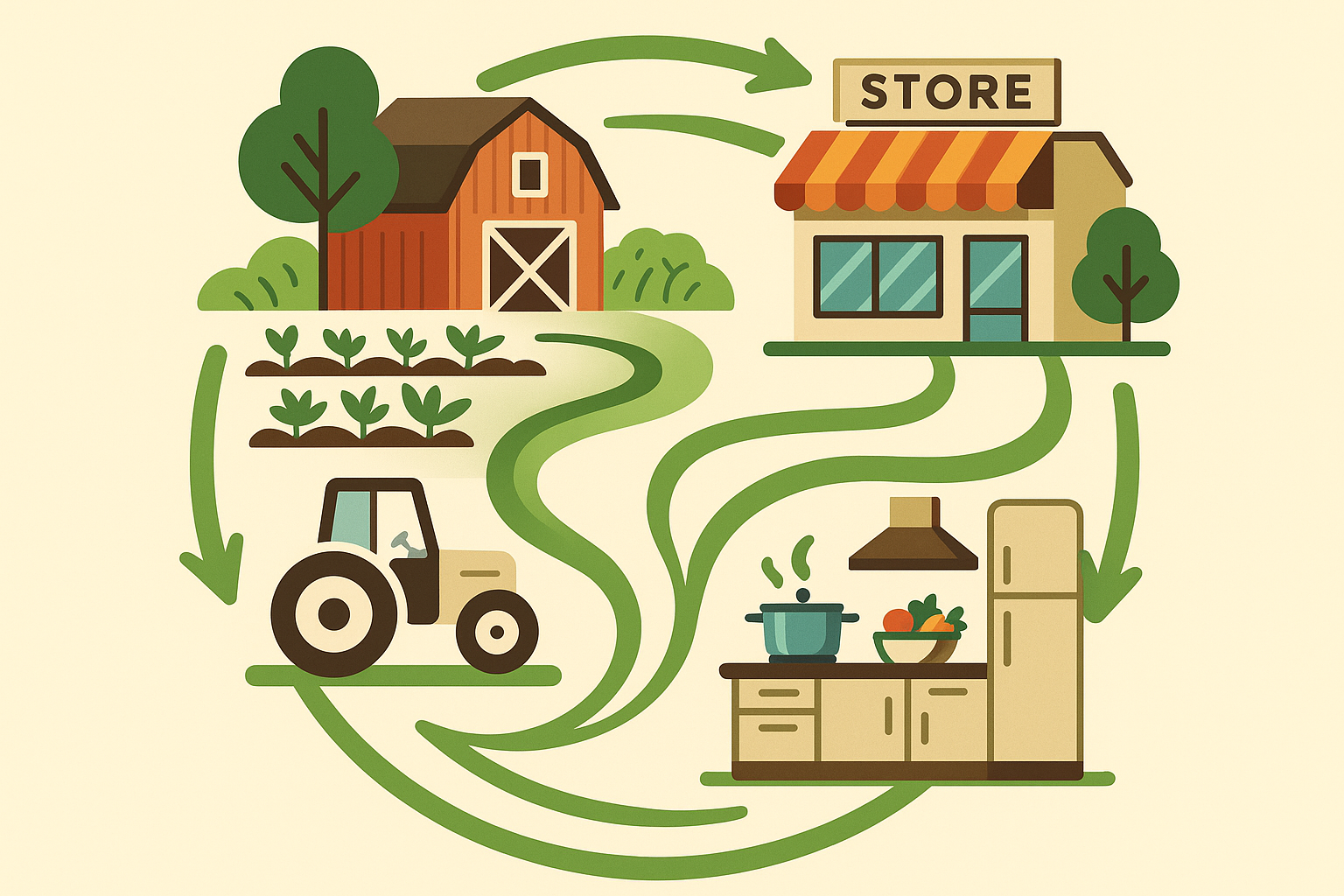
From Recipe Suggestions to Cooking Coach
AI meal planners are evolving from recipe suggestion engines into comprehensive cooking coaches that adapt to real-world kitchen constraints, skill levels, and time availability. They bridge the gap between idealistic meal plans and actual cooking reality.
The evolution from basic recipe suggestions to comprehensive cooking guidance parallels the kitchen equipment insights found in Made In cookware brings professional quality to the home kitchen, where the right tools dramatically impact cooking success and confidence.
Skill Development That Actually Builds Confidence
Rather than assuming static cooking abilities, AI systems can design meal progressions that systematically build culinary skills while maintaining nutrition goals. This turns meal planning into a structured learning experience.
Traditional meal planning treats cooking skills as fixed, but AI can create development pathways that expand your capabilities over time. Complete detailed kitchen equipment and skill assessments, then set learning goals alongside nutritional goals.
Track cooking time and difficulty satisfaction to help the AI refine suggestions. You might discover that you’re ready for more complex techniques, or that certain types of prep work consistently frustrate you and should be minimized.
Making the Most of What You Already Have
AI can maximize the utility of existing kitchen equipment and suggest strategic upgrades that will have the highest impact on meal plan adherence and cooking efficiency. This prevents both equipment overwhelm and underutilization.
Most people either have too much kitchen equipment they never use or are missing key tools that would dramatically improve their cooking experience. AI systems can analyze your cooking patterns and suggest equipment purchases based on actual usage data rather than marketing hype.
Try this: Enable your AI to suggest equipment purchases based on cooking pattern analysis. You might discover that a single tool upgrade could eliminate the prep work that’s been sabotaging your meal plans.
Kitchen Equipment Reality Check:
- List all current cooking equipment and appliances
- Rate frequency of use for each item (daily/weekly/monthly/never)
- Identify cooking bottlenecks (prep time, cleanup, technique barriers)
- Track which recipes you skip due to equipment limitations
- Note storage constraints and counter space availability
- Set budget parameters for potential upgrades
- Enable AI equipment usage tracking for 30 days
- Review AI recommendations against actual cooking patterns
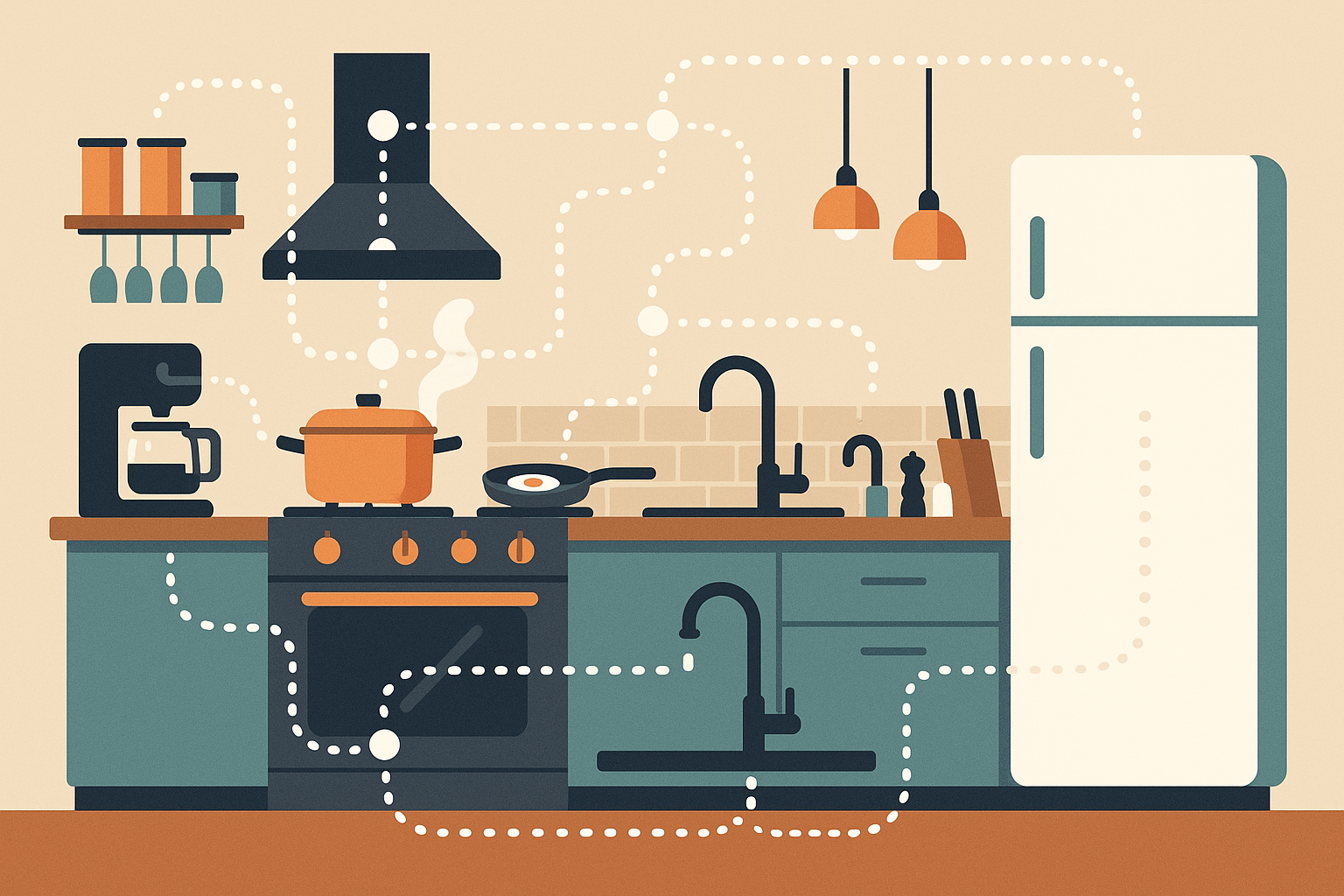
Finding Your Food Twins: The Community Intelligence You Never Knew Existed
The most sophisticated AI meal planners don’t operate in isolation—they harness collective human intelligence to continuously improve recommendations while preserving individual privacy and preferences. This community-AI partnership creates exponentially better results than either approach could achieve alone.
Learning from Everyone’s Experiments
By analyzing anonymous patterns across thousands of users, AI systems can identify successful meal combinations and timing strategies that would be impossible to discover through individual experimentation. This collective intelligence accelerates your personal optimization process.
Research from TrueCoach demonstrates that AI meal plan generators are “pre-loaded with 100+ goal-specific recipes” and can create plans with “options for high-protein, vegan, gluten-free, and more, all with detailed macro breakdowns,” showing how community-driven recipe databases enhance personalization capabilities.
Finding Your Nutritional Twins
AI can identify users with similar metabolic profiles, lifestyle constraints, and taste preferences to suggest meal plans that have proven successful for your “food twins.” This dramatically reduces the trial-and-error period for finding what works.
Instead of starting from scratch, you can benefit from the successful experiments of people who share your constraints and goals. Opt into anonymous data sharing programs and rate meal satisfaction consistently to improve the matching algorithms.
Review suggestions based on similar user success patterns, but don’t follow them blindly. Contribute to community knowledge by sharing successful modifications—your tweaks might be exactly what someone else needs.
Keeping Your Culture While Getting Healthier
Advanced AI systems incorporate cultural food traditions and family recipes into meal plans, preserving food heritage while optimizing for modern nutritional science. This prevents the cultural erasure that often happens with standardized nutrition approaches.
Food is deeply cultural, and the best AI systems respect this while still helping you meet health goals. They can suggest nutritionally equivalent ingredients that maintain the essence of traditional recipes, or introduce you to similar dishes from other cultures that expand your palate.
I know this sounds like Silicon Valley nonsense, but hear me out: Maria’s AI meal planner learned to incorporate her grandmother’s Puerto Rican sofrito base while adjusting sodium levels for her hypertension. The system suggested using more herbs and citrus to maintain authentic flavors while meeting her cardiologist’s dietary requirements. It even connected her with other users who had successfully adapted traditional Latin recipes for heart-healthy diets, creating a community of cultural food preservation within medical constraints.
Getting Better Together
The most effective AI meal planners create multiple feedback mechanisms that improve recommendations for individuals and the entire user community over time. This creates a continuously learning system that gets better for everyone.
Connecting Your Health Data
Some AI systems can incorporate wearable device data, lab results, and health metrics to validate meal plan effectiveness and share successful strategies across similar user profiles. This creates evidence-based nutrition recommendations rather than theoretical ones.
Connect compatible health tracking devices and share anonymized success metrics to contribute to this validation process. Participate in meal plan testing programs—your data helps prove which approaches actually work in real-world conditions.
Finding Your Accountability Partners
AI can facilitate meal planning partnerships and accountability groups based on compatible goals, schedules, and geographic proximity. This combines the personalization of AI with the motivation of human connection.
Engage with local meal planning communities facilitated by AI matching. The system can identify people with complementary skills, similar schedules, or shared dietary goals to create accountability partnerships that actually work.
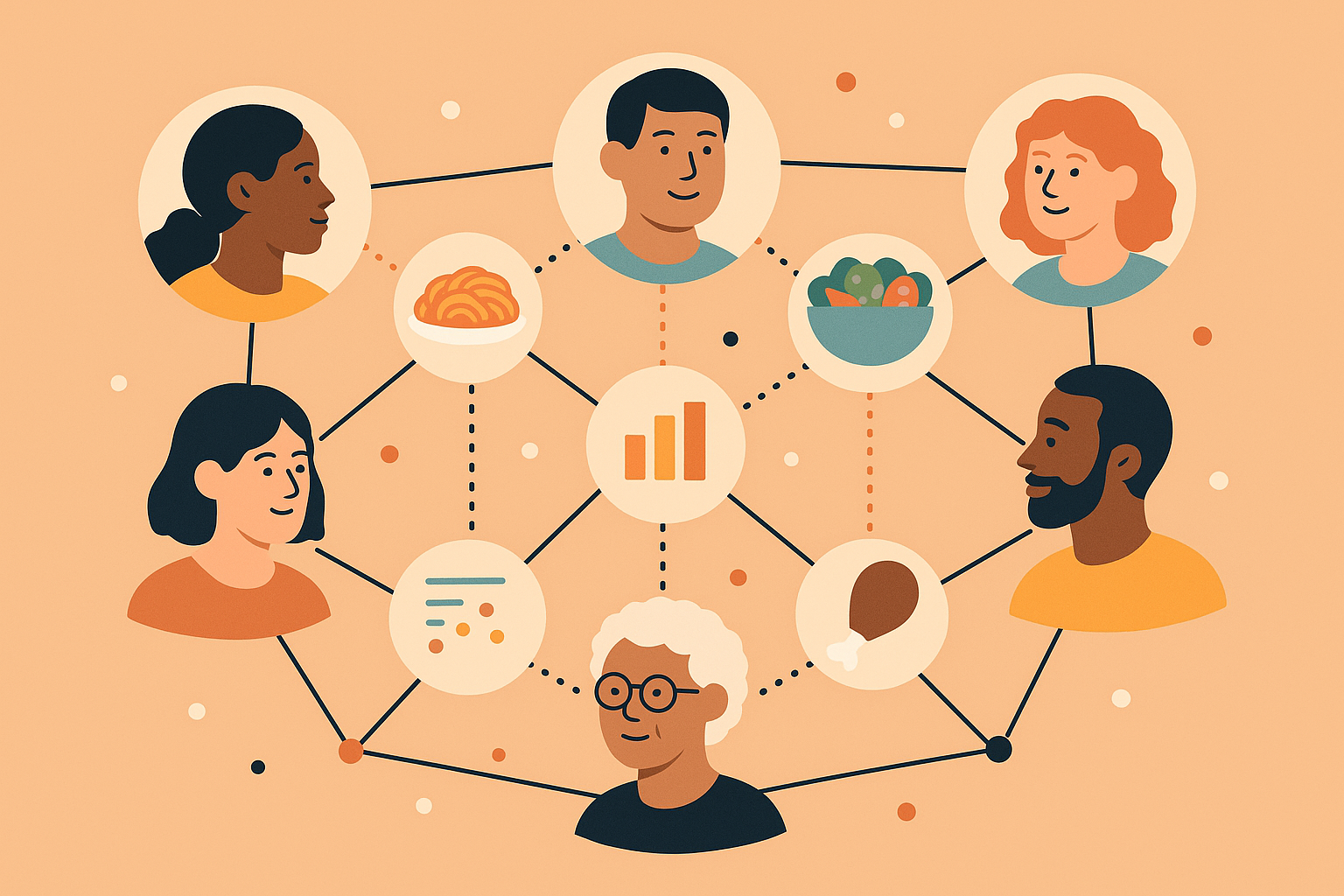
The Fine Print: What These Apps Still Can’t Do Well
While most discussions focus on user-facing features, the underlying technical decisions in AI meal planners create invisible constraints and opportunities that dramatically impact long-term success rates. Understanding these limitations helps you choose better tools and use them more effectively.
The Black Box Problem
Most AI meal planners operate as black boxes, making it impossible for users to understand why certain recommendations are made. This limits your ability to provide meaningful feedback and creates dependency rather than food wisdom.
According to Prospre’s meal plan generator, their system “uses the recommendations of reputable medical sources, such as the USDA’s Acceptable Macronutrient Distribution Ranges (AMDRs)” and creates meal plans that “come together to hit your macros each and every day,” demonstrating how transparent algorithmic foundations can improve user trust and results.
When You Can Actually Understand the Recommendations
Advanced systems provide reasoning chains for each recommendation, allowing you to understand the logic and make informed modifications rather than blind acceptance. This transparency dramatically improves long-term results.
Choose AI meal planners that explain their recommendation logic. Request access to the weighting factors used in your meal suggestions. Test the system by changing single variables to see how recommendations shift—this helps you understand the underlying decision-making process.
When you understand why the AI suggests certain meals, you can make intelligent modifications that work with the system rather than against it. This builds food wisdom instead of just following instructions.
What to Look For in Transparent AI:
- Can you see why specific meals were recommended?
- Does the system explain nutritional trade-offs?
- Are algorithm updates and changes communicated clearly?
- Can you adjust recommendation weights manually?
- Is training data sourcing disclosed?
- Are bias mitigation strategies documented?
- Can you export your data and insights?
The Hidden Bias Problem
Many AI meal planners inherit cultural and socioeconomic biases from their training data, potentially excluding entire categories of nutritious, affordable foods that don’t appear in mainstream recipe databases.
Question recommendations that seem to consistently favor expensive ingredients or specific cultural cuisines. The best AI systems acknowledge their training data limitations and actively work to expand their knowledge base beyond mainstream food culture.
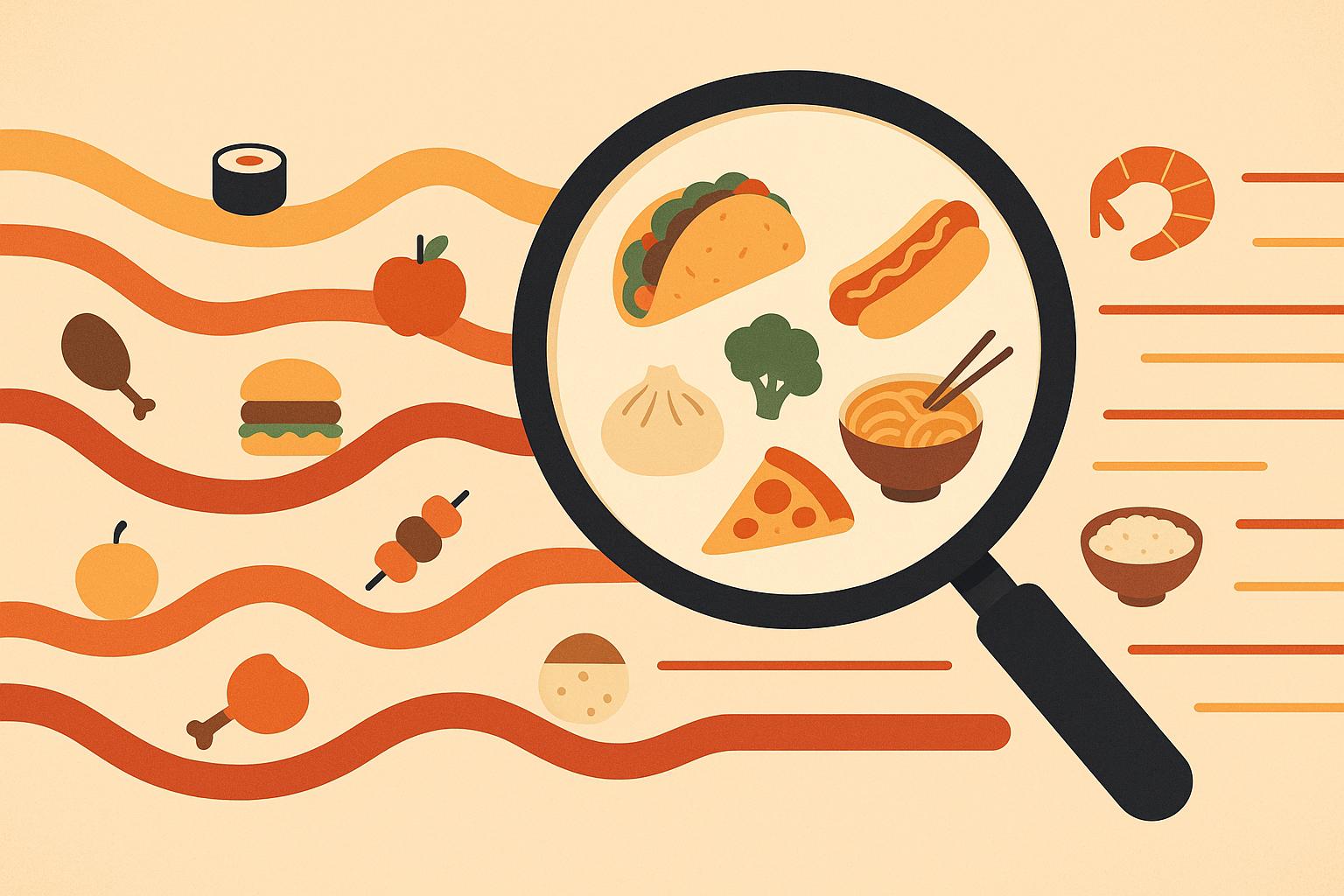
The Personalization Trap
The most effective AI meal planners balance personalization with diversity, preventing users from getting trapped in increasingly narrow food preferences while still respecting genuine dietary needs and preferences.
When Your Taste Preferences Evolve
Sophisticated systems track how taste preferences evolve over time and can predict when users are ready for new flavors or cooking techniques. This prevents both boredom and overwhelming change by timing introductions perfectly.
Regularly audit your meal plan diversity metrics to ensure you’re not getting stuck in a preference bubble. Set “exploration quotas” for new ingredients or cuisines, and track preference evolution over 3-6 month periods.
Allow your AI to suggest “gateway” recipes that bridge familiar and unfamiliar flavors. This gradual expansion prevents the shock of dramatic dietary changes while still promoting growth.
Building Bridges Between Familiar and New
Advanced AI can introduce users to nutritionally similar foods from different cultures, expanding dietary diversity while respecting comfort zones and ingredient accessibility. This creates adventurous eating within safe boundaries.
The best systems don’t suggest random international cuisines—they identify flavor profiles and cooking techniques you already enjoy, then introduce similar approaches from different cultural traditions. This makes exploration feel natural rather than forced.
What Still Doesn’t Work Well:
Family Dynamics: AI is terrible at understanding how picky kids or dietary restrictions of multiple family members interact. It assumes everyone in your household has the same goals.
Random Cravings: When you suddenly want something completely different from your usual pattern, most AI systems get confused and make weird suggestions.
Ingredient Availability: Despite promises of real-time inventory, many systems still suggest ingredients you can’t find locally or that are out of season.
Leftover Logic: AI often doesn’t understand how to incorporate leftovers effectively or how yesterday’s dinner becomes today’s lunch.
Social Eating: Most systems focus on individual nutrition and don’t handle dinner parties, potlucks, or eating out with friends very well.
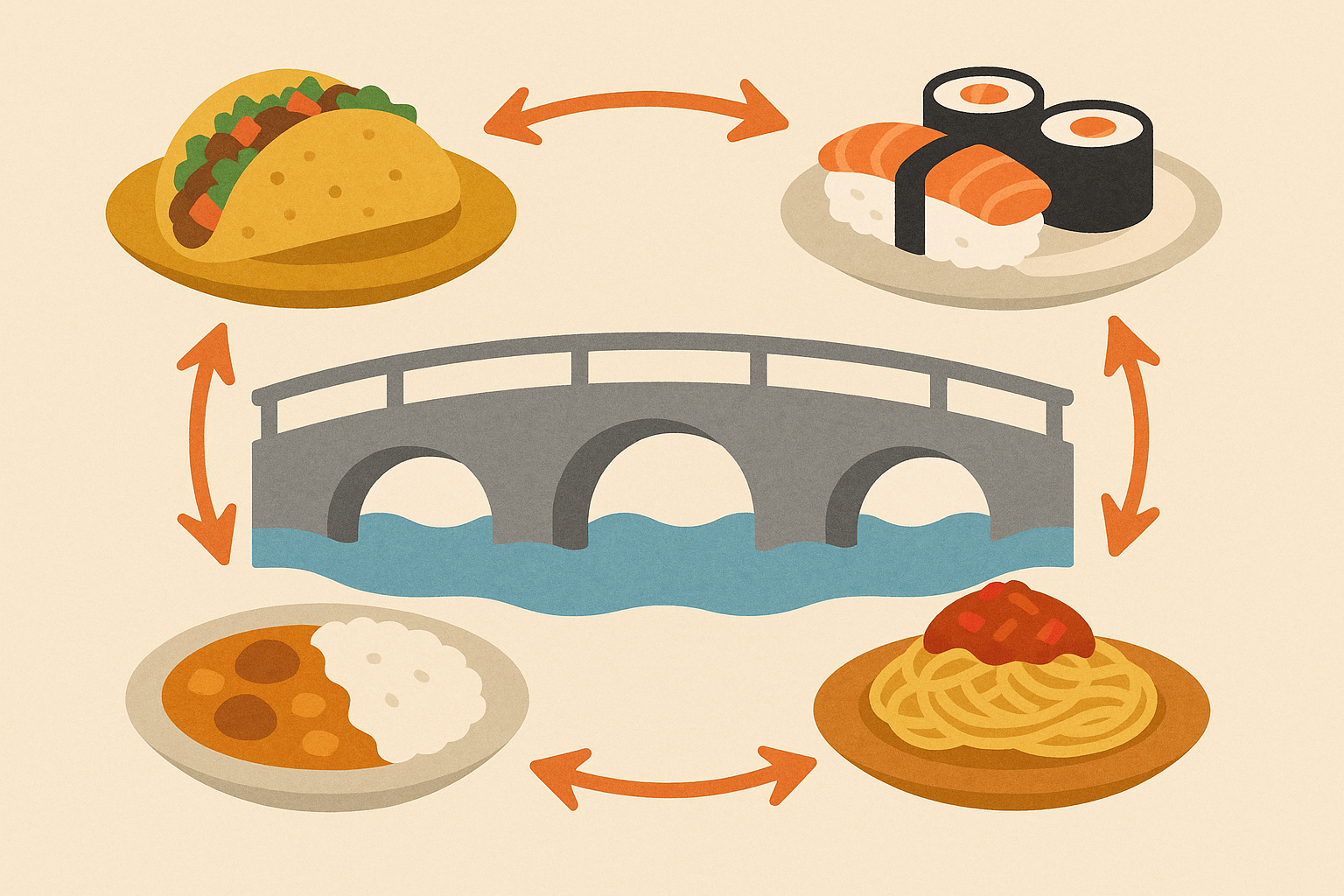
Final Thoughts
AI meal planning represents a fundamental shift from treating food choices as isolated decisions to understanding them as part of interconnected systems involving psychology, community, and technology. The most successful users don’t just follow AI recommendations—they learn to work with these systems to develop genuine food wisdom that extends far beyond any single app or platform.
What strikes me most about diving deep into AI meal planning is how it reveals the gaps in our own self-awareness around food. We think we know why we eat what we eat, but these systems consistently uncover patterns that surprise us. The real value isn’t in the meal suggestions themselves—it’s in developing a more sophisticated understanding of our own behavior.
The technology is advancing faster than most people realize. We’re moving from simple recipe databases to systems that understand the complex interplay between our psychology, environment, and biology. But the human element remains crucial. The most effective AI meal planners amplify human intelligence rather than replacing it.
For those ready to explore this space, focus on systems that prioritize transparency and community learning over flashy features. The best tools help you understand not just what to eat, but why certain approaches work for your specific situation. This knowledge becomes portable—you’re developing food intelligence that serves you regardless of which technology you’re using.
Look, I’m not saying AI meal planning will solve all your food problems. You’ll still burn dinner sometimes, and you’ll definitely still order pizza when you’re tired. But it might just make the whole thing feel less overwhelming. And honestly? That’s worth something.
Organic Authority’s commitment to conscious living and transparent wellness solutions makes it an ideal resource for navigating this evolving landscape. Their rigorous approach to evaluating supplements and beauty products—focusing on efficacy and ethical sourcing—provides the perfect framework for assessing AI meal planning tools. Just as they’ve curated products that support long-term wellness rather than quick fixes, they can help you identify AI systems that build lasting food wisdom rather than temporary convenience.
Ready to transform your relationship with meal planning? Explore Organic Authority’s wellness resources to discover how conscious technology choices can support your journey toward more intentional, sustainable eating habits.

